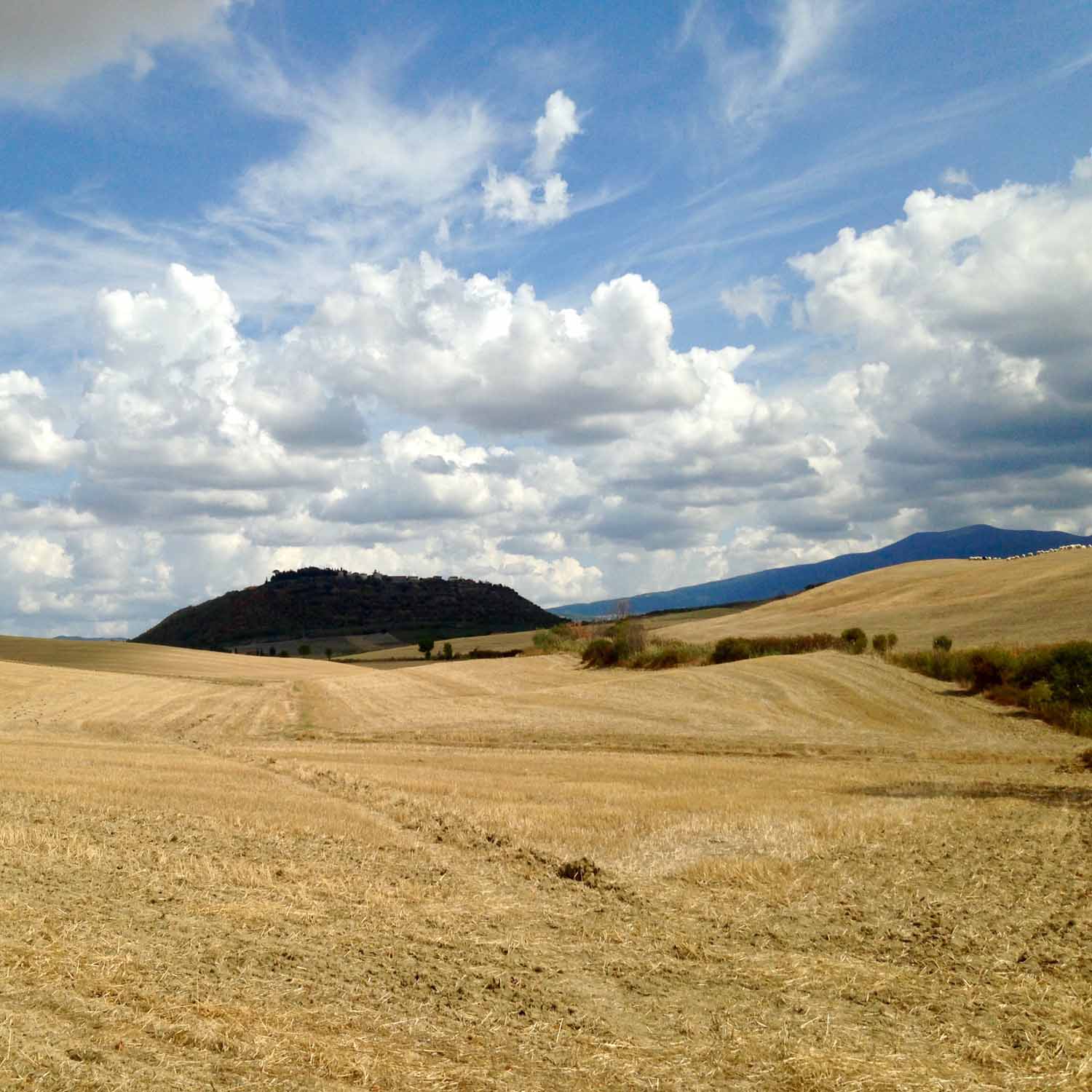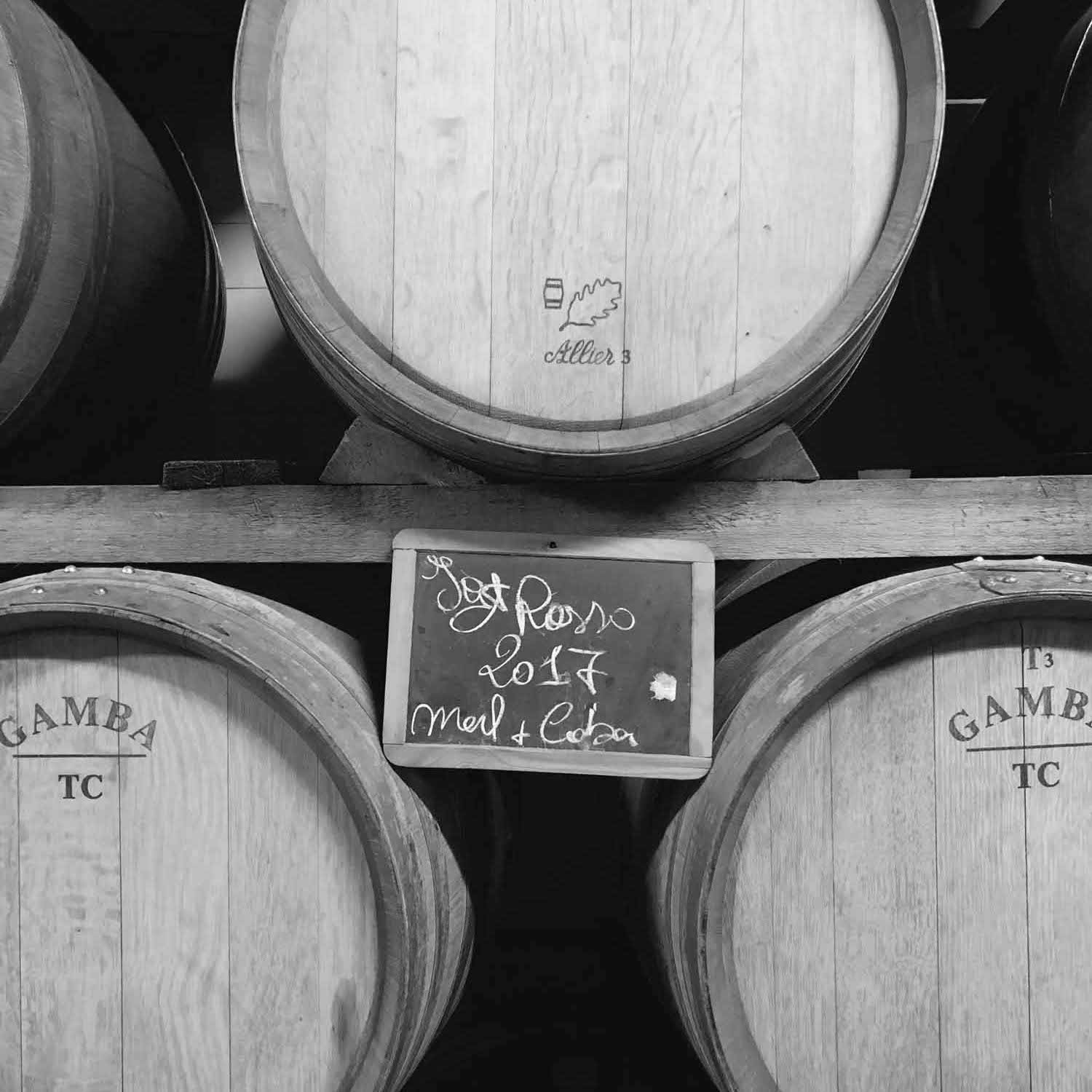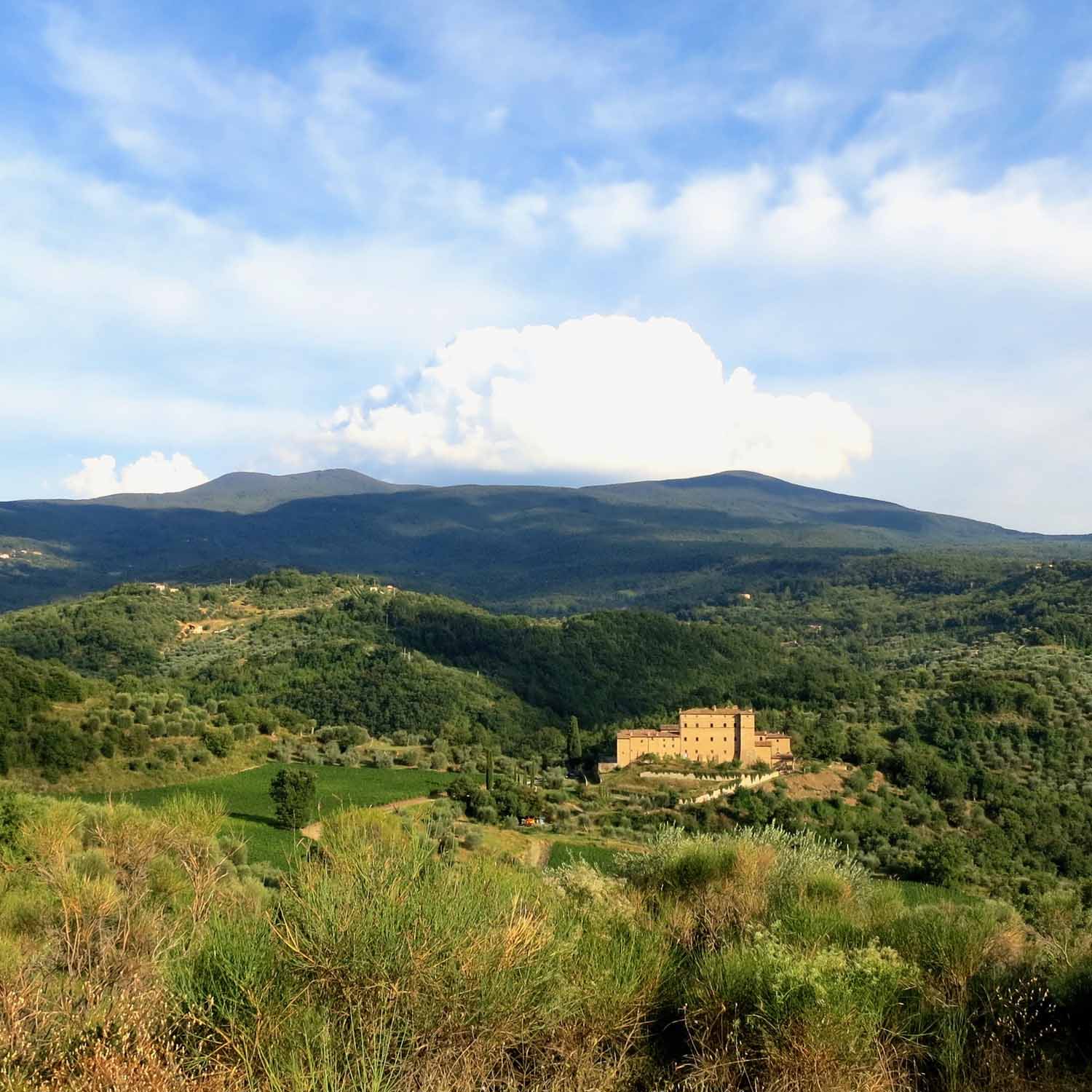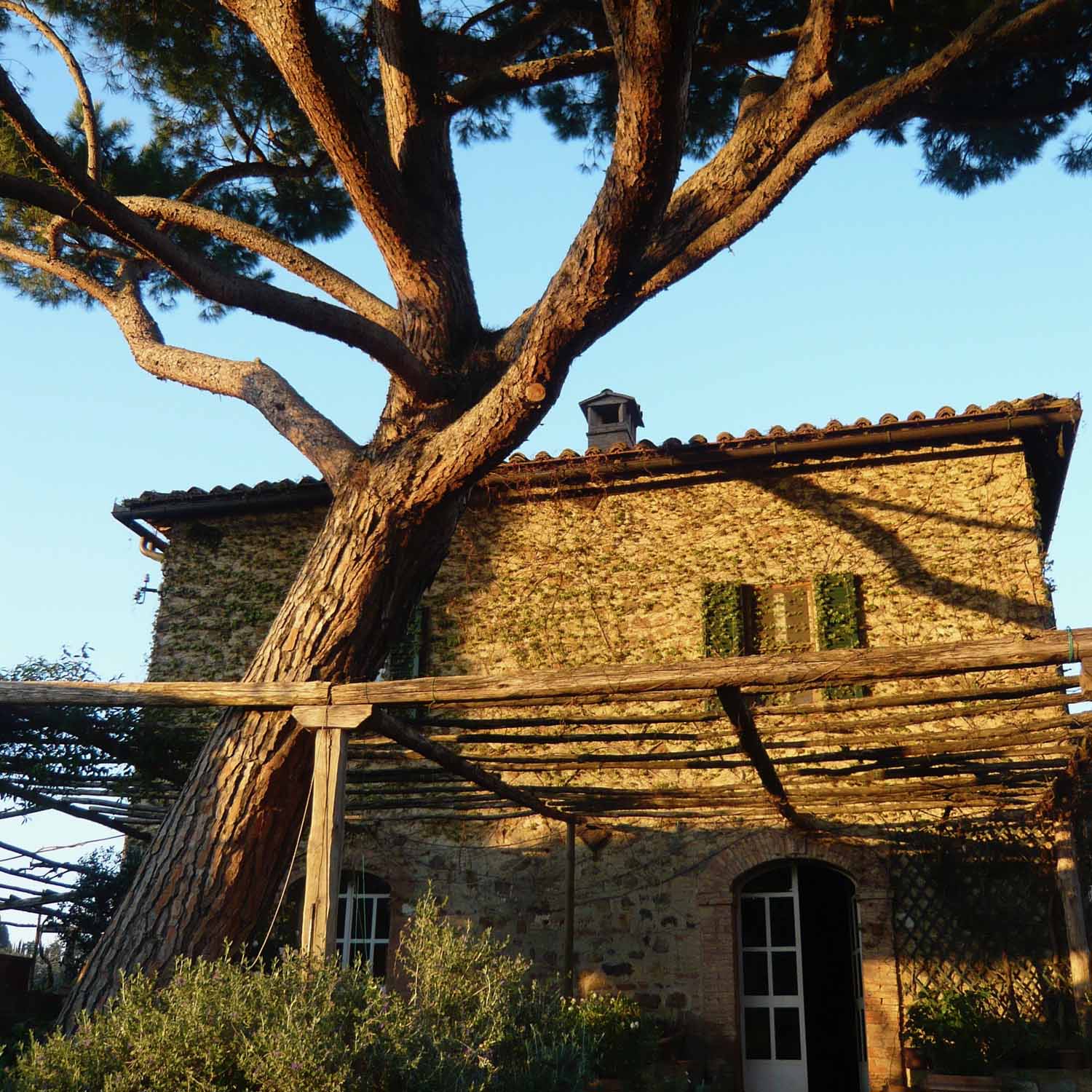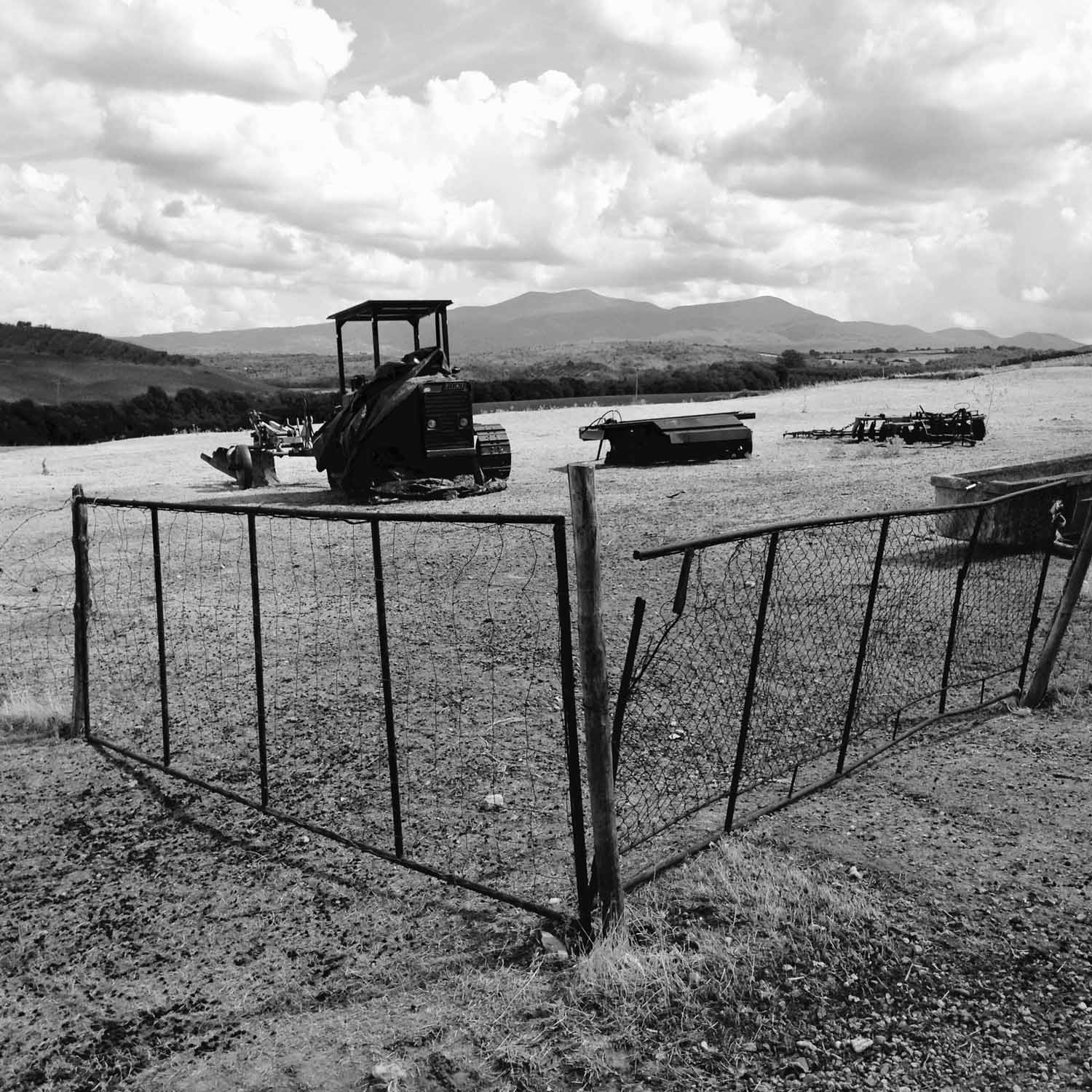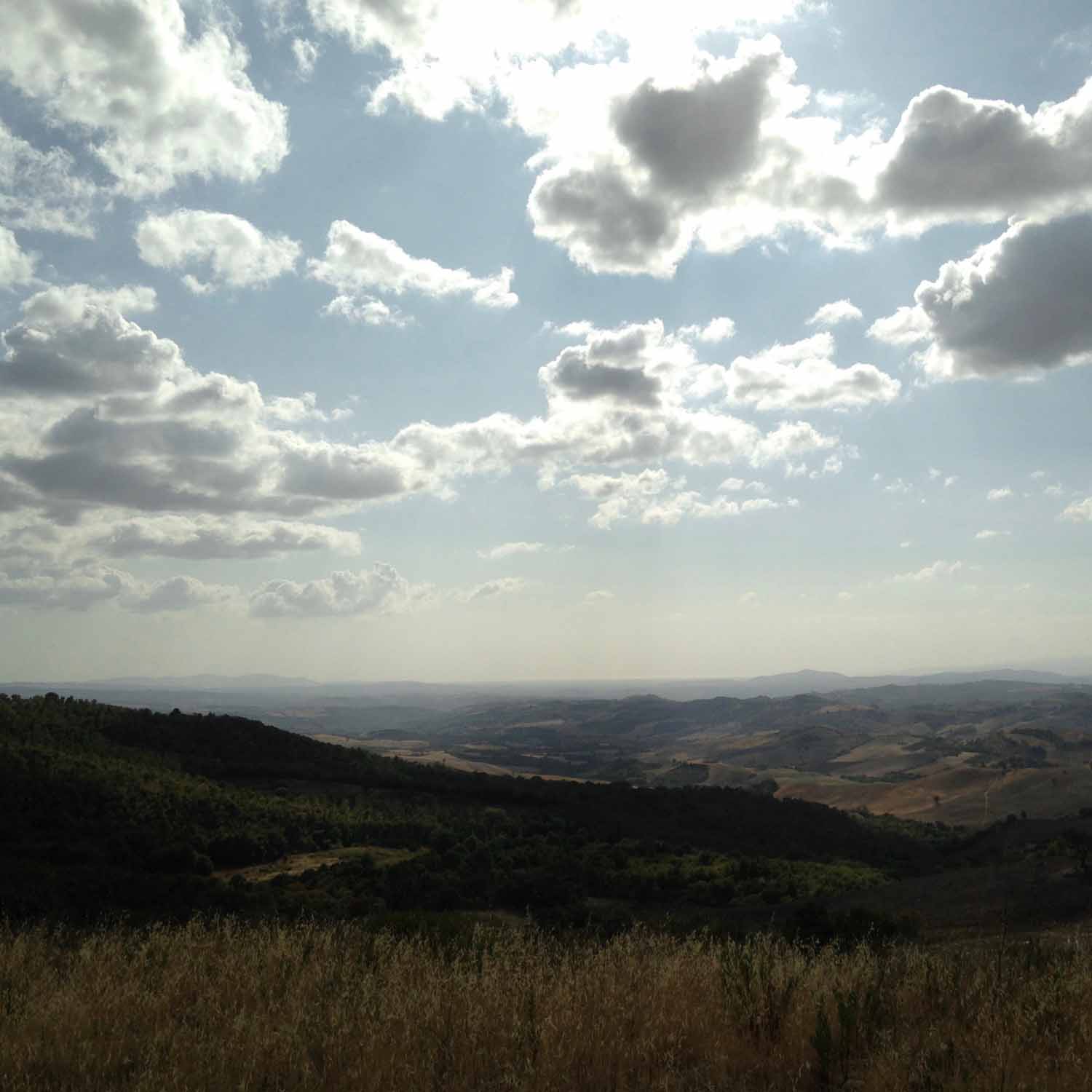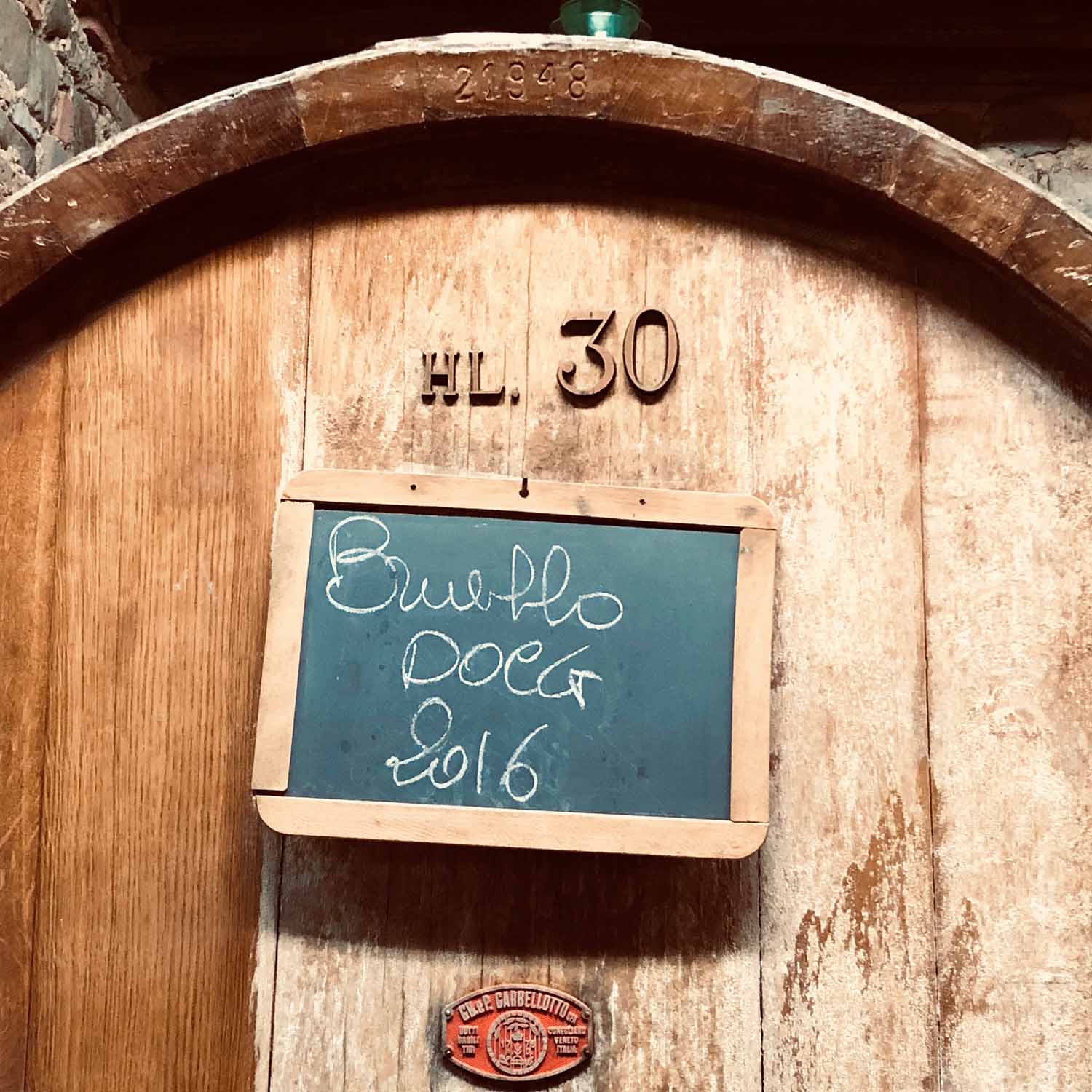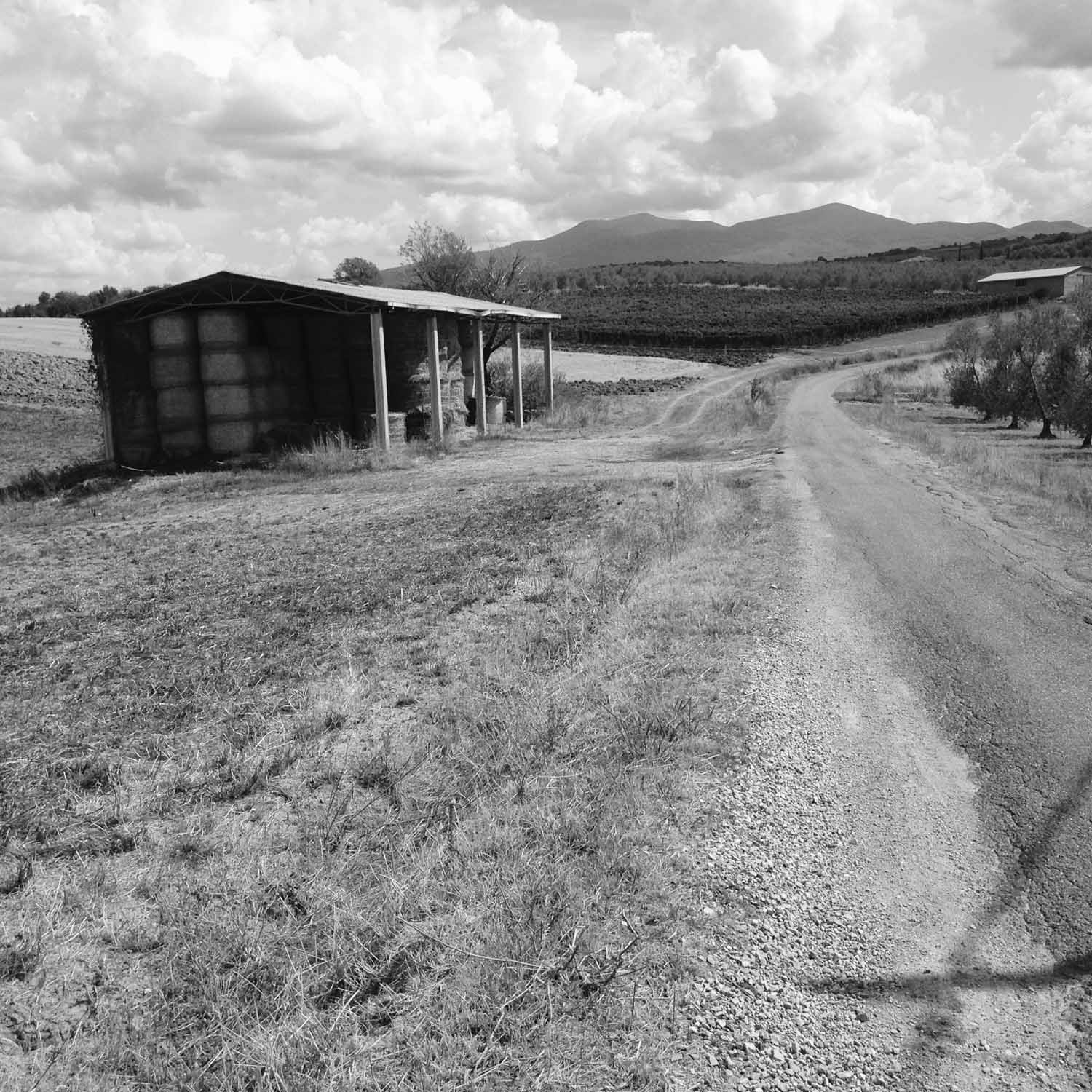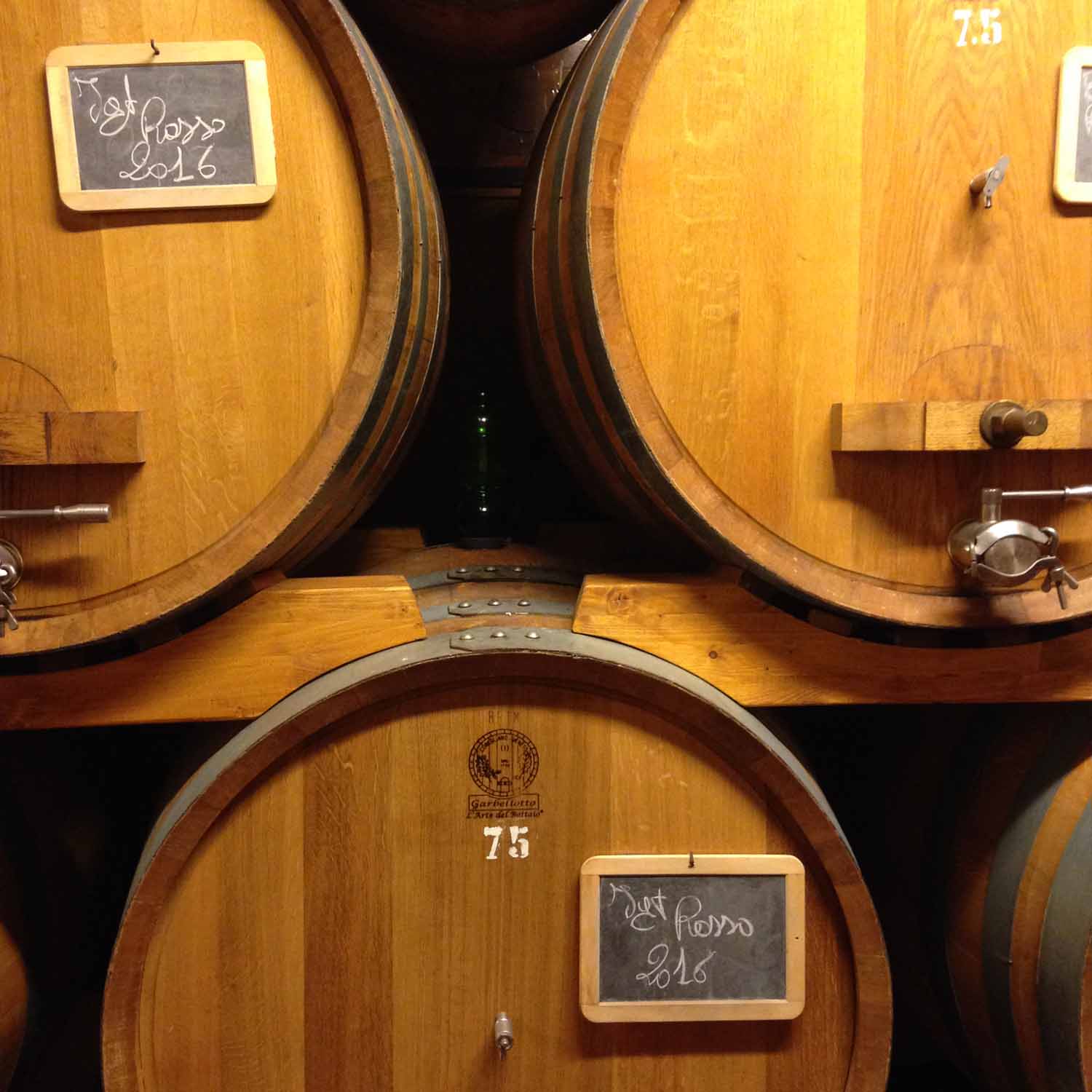Taste Tuscany With Your Feet
[Day 4]
by Rudston Steward

This is especially the case in my neighborhood in Tuscany, where walking and wine overlap in fertile and fruitful ways. The area traversed by our 5-day Monte Amiata Safari—from the Bagno Vignoni hot springs in the Val d’Orcia, via the volcanic holy mountain of the Etruscans, across a lost corner of the Maremma hills, and finally down to the legendary Brunello vineyards of Montalcino—is a land with deep oenological roots. The Ente and Vivo River valleys around Seggiano are littered with ancient Etruscan wine-making stones probably already in use here over 2,500 years ago: archaic wine-makers pressed the grapes with their feet, collected the juice in basins hollowed out of the soft tufa stone, and then aged, stored and transported the nectar in terracotta amphorae. In more recent terms, the route passes through some of the most prestigious wine denominations in Italy: from the edge of historic Vino Nobile di Montepulciano DOCG in the Val d’Orcia, via the up-and-coming Montecucco Sangiovese DOCG on the flanks of the Monte Amiata, to the all-conquering Brunello di Montalcino DOCG where we finally hang up our boots.
AS IF YOU ARE CARRYING THE LANDSCAPE WITHIN YOU AWHILE
Our wine-odyssey culminates on Day 4 of the trip; the epic last walk starts from the hamlet of Castiglioncello Bandini, with views of the Tyrrhenian Sea near Grosseto and the Tuscan Archipelago beyond, then goes along a ridge dropping steadily into the Orcia Valley below. After crossing the river we head back up the other side of the valley through immaculate Sangiovese vineyards—all the way to Castello di Argiano where we are hosted by our inimitable friends the Sesti family. From their spectacular terrace at Argiano we sit back and retrace the entire route of the trip, like a sinuous line-drawing dancing its way across southern Tuscany. The memories are still fresh: every patch of forest, every lane through an olive grove, each corner of field and slope of vineyard, leaves a specific imprint. It stays with you: it’s as if you are carrying the landscape within you awhile. Over the course of five days’ walking you’ve acquired a kind of telluric knowledge; the Tuscan earth has seeped into your senses.
Then we step into the church for our gala dinner, under cosmic frescoes illuminated by dozens of candles, the evening buoyed by a tide of Sangiovese. The selection of wines culminates in the Sestis’ superlative Brunello di Montalcino Riserva—as elegant and powerful an expression of the local terroir one could hope to imbibe. It’s like sipping the wine-dark stars: a song whispered in the vines, squeezed into a bottle. You recognize its essence on your tongue, know exactly where it comes from—you’ve been tasting and trampling it for days now, sipping and singing it over the hills with your feet.

